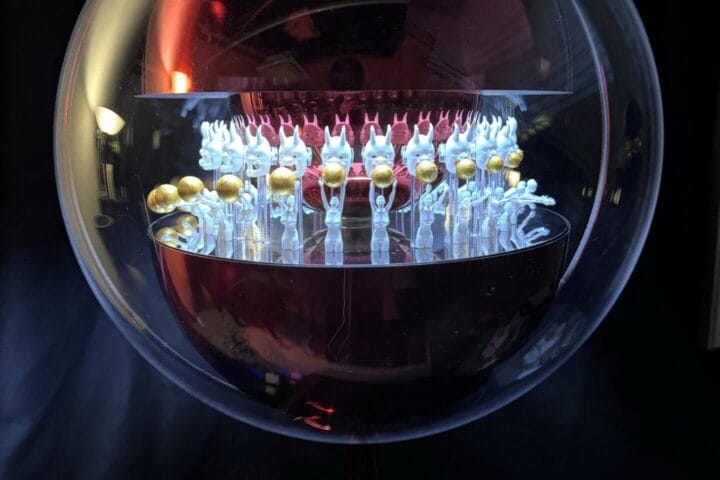The National Gallery has acquired its first painting by the German Modernist painter Max Pechstein (1881–1955) — thanks to the bequest of a plot of land by a French teacher from the north-east of England.
The purchase of Portrait of Charlotte Cuhrt from auction at Bonhams in November 2022 was made possible through a legacy to the Gallery by Martha Doris Bailey, from Hutton Rudby, near Stokesley in North Yorkshire, who died in 2000, aged 92. Mrs Bailey instructed that funds from the sale of the plot should be employed by the Gallery toward the acquisition of a painting in memory of her late husband, Richard Hillman Bailey. The 65-acre site near Stockton-on-Tees, County Durham was sold last year after planning permission to build on the land was granted. The portrait will complement a painting in the Gallery’s collection by another German artist working in the late 19th century; Adolph Menzel’s Afternoon in the Tuileries Gardens which was bought in 2006 with help from a previous bequest by Mrs Bailey also in memory of her husband.
The acquisition of the picture by Pechstein, who worked in Paris and Berlin at the turn of the 19th century, builds on the Gallery’s desire to represent early 20th-century German painting in its collection. On display from 20 February 2023, the work will join the Gallery’s collection among pictures by Van Gogh, Ferdinand Hodler, and Lovis Corinth (whose Portrait of Ferdinand Mainz is shared between the Gallery and the Barber Institute, Birmingham). From March to August 2023, the painting will form part of the Gallery’s major exhibition After Impressionism: Inventing Modern Art, focusing on some of the exciting and often revolutionary artistic developments in Berlin during the late 19th and early 20th centuries. In a section of the exhibition entitled ‘New Terrains’, the Pechstein portrait will be displayed to show the explosion of colour and rhythm in German Expressionism.
The portrait’s subject, Charlotte Cuhrt, was the daughter of Max Cuhrt, a highly successful Berlin solicitor who moved in avant-garde circles. The painting’s bespoke altarpiece-like frame, itself a work of art, was made by Bruno Schneidereit, the architect who designed the apartment block Cuhrt and the 15-year-old Charlotte were living in at the time. Charlotte is shown seated in that very apartment, dressed in brilliant red, feet on a richly carpeted floor, her large, watery eyes staring ahead. Pechstein’s paint handling is bold, free, open. The work is a daring, decorative statement of a new style – and a new way of living – that announced a sophisticated, liberal, even joyous German future.
Max Pechstein overthrew his academic training in art at the Royal Academy in Dresden when as a young artist he was seduced by the brilliant colours and expressive brushwork of Vincent van Gogh and was invited to join a group of determinedly untrained, ‘spontaneous’ painters calling themselves Die Brücke (The Bridge). Even after his subsequent break with this group, Pechstein was a key conduit for avant-garde influences from across Europe as they intersected with German art. He enjoyed success in sophisticated intellectual and artistic circles and among collectors, especially in Berlin, who admired his audacious painting style but also appreciated its decorative richness and loud, insistent, jazz-like lyricism. His success continued during the 1920s but came to a crashing halt with the rise to power of the Nazis, who denounced his art as ‘degenerate.’ Pechstein himself tactically retired to the countryside during the Second World War.
Christopher Riopelle, Curator of Post 1800 Paintings at the National Gallery, says: ‘Brilliant colour was a clarion call of contemporary painting in France from the late 1880s onwards. Here, Pechstein, an early admirer of Van Gogh and recently back in Berlin after a Paris sojourn where he discovered another great colourist, Matisse, declares that it will play a key role in German avant-garde painting too.’
Gabriele Finaldi, Director of the National Gallery, says: ‘Mrs Bailey’s extraordinarily generous request has enabled the purchase of a superb painting by Max Pechstein, an artist unrepresented until now in any national collection.’











